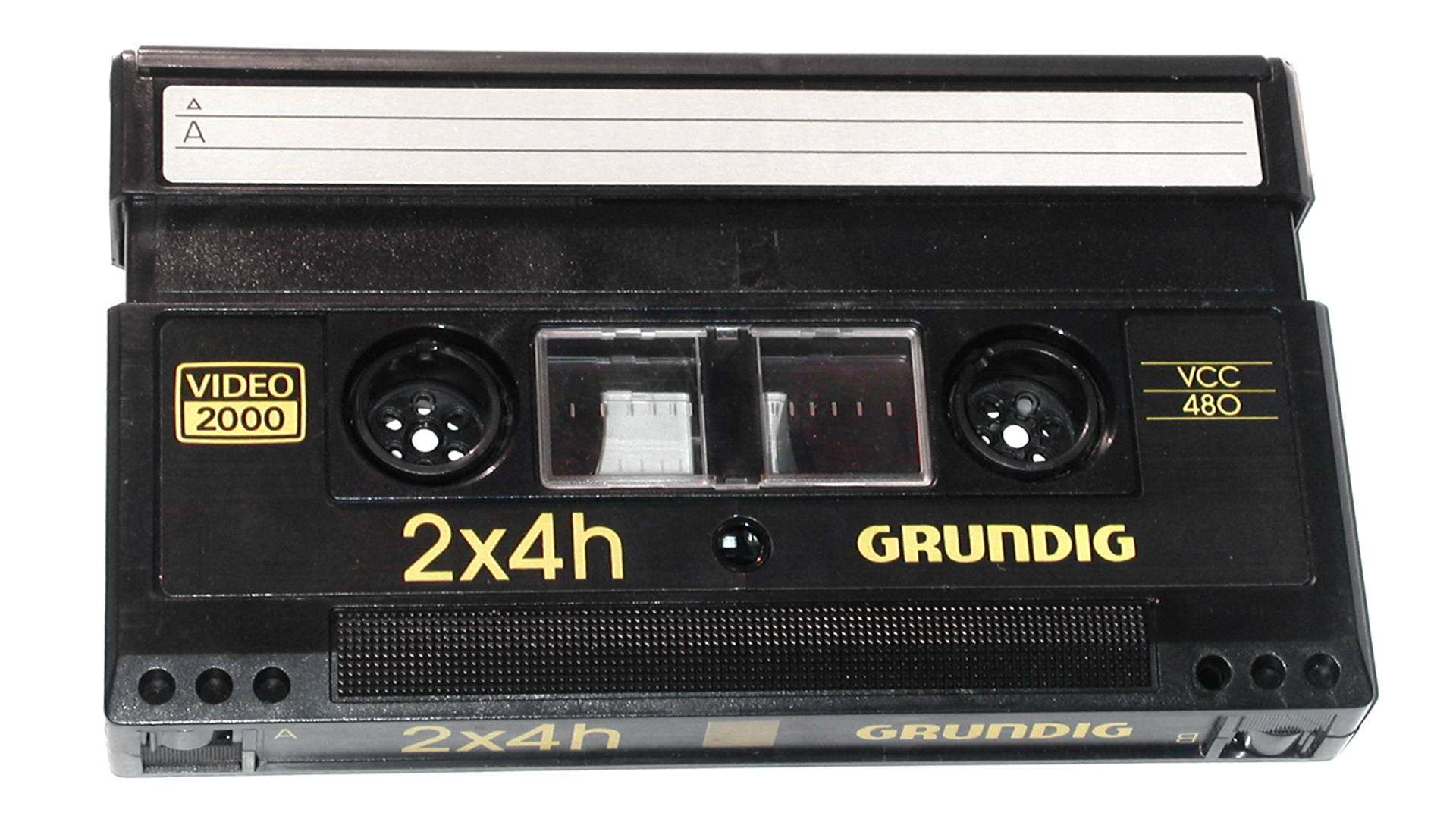
Replay: The 1980's were a hotbed of format wars. How did we survive? And more importantly, did a company really try and sell us a video tape that you could turn over? Phil Rhodes starts a two part series delving into the murky world of recording formats that never made it.
It seems somehow appropriate to be talking about archaic video media formats at a time when physical media is on its way out. Or, at least, proprietary physical media is on its way out; we’re always going to need flash cards, but claims that it’s really necessary for every company to have its own private flash format have been hard to substantiate for some time. Even organisations which have long held firmly to their own private approach to putting someone else’s flash chips inside a little box have finally started to unbend a little. But in the mid-to-late 70s, video tape recording was becoming less a piece of high-end esotera and more a mainstream technology, and the consumer market was one everyone was keen to dominate.
There’s a well-known story here. Beta fought VHS; Beta was better, VHS won, and everyone in the know spent the next three decades being professionally gloomy about it while steaming up the window in front of an impossibly expensive Laserdisc player. The thing is, that’s not most of this story. That’s not even a significant part of this story. In the annals of video formats that conspicuously failed to thrive, Beta isn’t the loser of the format wars; it’s one of the huge success stories.
To wit, has anyone ever heard of Cartrivision? Promoted with casual chauvinism in the early 70s, it involved chunky six by seven inch cartridges an inch and a half thick, containing two stacked reels of half-inch tape. It was probably the first format to offer films for rental with the slightly nonplussing restriction that rental carts (red in colour) couldn’t be rewound in home equipment. It was, frankly, pretty dismal from a technical standpoint: displaying each frame three times, it worked at ten frames per second.
Modern references suggest Cartrivision lasted about a year, possibly because it was available only as an integrated television-recorder system that cost a lot of money. It suffered very little competition because the Philips VCR system (referring, confusingly, the company’s videocassette format which was called “VCR”) was only released east of the Atlantic. VCR, too, was a child of the 70s in that it looked like a giant 8-track cartridge which required both hands to lift, and it also failed because it cost as much as a small car. There are other, even more obscure early systems we could talk about. VX was sold in Japan until its creator Matsushita went in with JVC on VHS. Sanyo’s V-Cord started as a monochrome only system, with a 1976 update providing colour. Sanyo, perhaps to their later chagrin, gave it up for Betamax.
The cost issue
Cost was a constant problem, and one which had been faced by the world’s first ever videocassette format: U-matic. It lasted through the 1990s as part of Sony’s professional range, but it had originally been intended for home use. Launched a year before Cartrivision and VCR, U-Matic failed as a consumer product possibly because eBay did not yet exist as a good place to fence a spare kidney; the equipment was hopelessly expensive. Before that, consumer video recording had been limited to cumbersome open-reel designs which were loved only by the earliest adopters, and audio tape carts were big at the time, so the cartridge systems were a fairly natural evolution.
Various updates and enhancements would take the cartridge systems to the end of the 1970s, but by that time Betamax (1975) and VHS (1976 or 1977, depending where you were) were beginning to assert themselves. The runt of the litter was probably Philips’ Video 2000, a format that handled PAL and SECAM only and lasted nine years from 1979. Much as Video 2000 seems like a historical footnote today, it’s worth remembering that Philips had effectively developed the compact cassette format in the early 1960s and named the Video 2000 tapes “video compact cassette,” presumably in the hope of replicating their earlier success. In the end, Video 2000 was a few years late, and still didn’t work as well as the latest versions of VCR-derived formats. That’s possibly because Philips had ensured that it was possible to pull flip a Video 2000 tape over to record the other side. Yes, that meant the format effectively used a chunk of tape a quarter inch wide, but it also meant it operated more like an audio cassette. The gimmick wasn’t enough and it vanished in the late 80s.
But tape wasn't the only game in town: as early as the mid-1960s, RCA had been working on a video disc that looked disarmingly like a Laserdisc, but which might have appeared twenty years earlier, which I'll discuss next time.
Tags: Technology


Comments